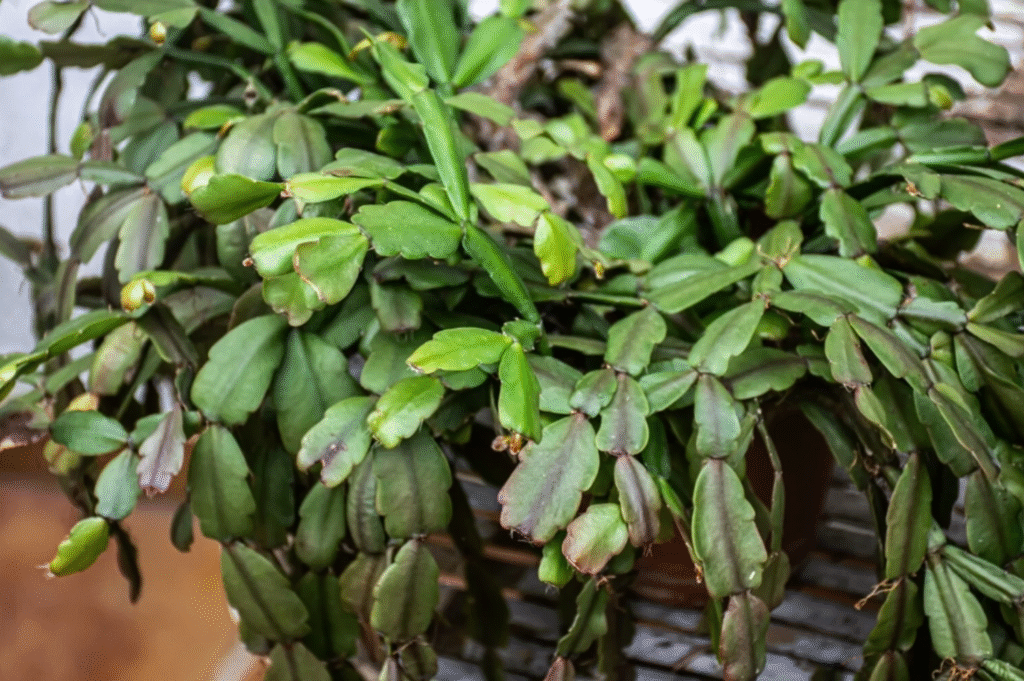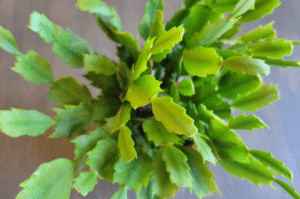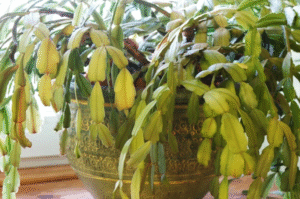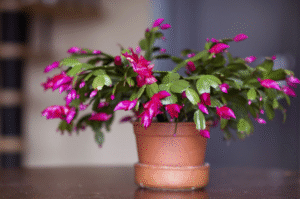The Christmas Cactus is one of the most cherished indoor plants, especially during the winter holiday season. With its vibrant blooms and forgiving nature, it’s a favorite among houseplant lovers. But like all potted plants, it may eventually need to be repotted. So, how do you know when it’s time? And is repotting even necessary for your Christmas Cactus to thrive?
In this article, we’ll walk you through everything you need to know about repotting a Christmas Cactus, including when, why, and how to do it the right way. If you want your plant to stay healthy and bloom beautifully every year, this guide is for you.
What Is a Christmas Cactus?
Before diving into repotting, let’s quickly understand what makes the Christmas Cactus unique. Despite its name, this plant is not a true cactus. It’s a tropical succulent that originates from the rainforests of Brazil. Unlike desert cacti, it prefers humidity and indirect light. The Christmas Cactus is known for its festive blooms in December, hence the name.
It grows in segments and can live for decades with proper care. But like all plants, its growing needs can change over time, especially when it becomes root-bound or the soil quality declines.
Do You Need to Repot a Christmas Cactus?
The short answer: Not frequently, but yes, occasionally.
Unlike many houseplants that need repotting every year or two, Christmas Cactus prefers to be slightly root-bound. This means it likes a snug pot where the roots are somewhat crowded. In fact, being slightly root-bound can even encourage more blooming.
However, there comes a point when the plant outgrows its container or the soil becomes compacted, affecting water flow and nutrition. In these cases, repotting becomes essential for your plant’s health.
Signs Your Christmas Cactus Needs Repotting
Here are clear indicators that your Christmas Cactus is ready for a new home:
1. Roots Growing Out of Drainage Holes
If you see roots poking through the bottom of the pot, it’s a strong sign your plant is outgrowing its container.
2. Water Drains Too Quickly
When soil becomes overly compacted or root-bound, it may not retain water well. If water runs straight through, the roots aren’t absorbing moisture effectively.
3. Wilting or Stunted Growth
Even with regular watering, if your Christmas Cactus looks droopy or growth slows down significantly, poor soil health or root congestion could be to blame.
4. Soil Looks Depleted or Moldy
Old soil loses nutrients over time. If the potting mix looks crusty, moldy, or gives off a foul odor, it’s time for a refresh.
5. You Haven’t Repotted in 3-4 Years
Even if everything looks fine, it’s a good idea to repot your Christmas Cactus every 3 to 4 years to refresh the soil and check root health.
Best Time to Repot a Christmas Cactus
Timing is everything. The best time to repot a Christmas Cactus is:
- Late Winter to Early Spring (after blooming season)
- Avoid repotting during bloom — this can shock the plant and cause flowers to drop.
Repotting during the active growth period gives the plant time to settle into its new environment and recover quickly.
How to Repot a Christmas Cactus (Step-by-Step)
What You’ll Need:
- A new pot (1–2 inches wider than the current one)
- Fresh well-draining potting mix (ideally cactus or succulent mix)
- Gloves (optional)
- A trowel or small spade
Step 1: Choose the Right Pot
Pick a pot that’s slightly larger than the current one. Avoid over-potting, as a pot that’s too big can hold excess moisture and cause root rot. Always choose a pot with drainage holes.
Step 2: Prepare the Soil
Use a well-draining soil mix. A blend of cactus soil with added perlite or orchid bark works great. Christmas Cactus prefers light, aerated soil that doesn’t stay soggy.
Step 3: Remove the Plant Gently
Loosen the soil around the edges and gently tip the pot. Support the base of the plant while pulling it out. If roots are tightly packed, gently loosen them by hand.
Step 4: Inspect the Roots
Trim off any dead or mushy roots. Healthy roots should be white or light tan and firm to the touch.
Step 5: Replant
Place a layer of fresh soil at the bottom of the new pot. Position the plant in the center and fill in around the sides with new soil, pressing gently to secure it.
Step 6: Water Lightly
Water the plant just enough to moisten the soil, then place it in a location with bright but indirect light.
Aftercare Tips for a Recently Repotted Christmas Cactus
- Avoid direct sun for the first week to prevent stress.
- Water sparingly at first. Allow the top inch of soil to dry before the next watering.
- Don’t fertilize for 1 month after repotting to avoid root burn.
- Watch for signs of new growth; this means the plant is adjusting well.
Common Repotting Mistakes to Avoid
Using the Wrong Pot Size
A pot that’s too big can lead to soggy roots, while a pot that’s too small won’t solve the overcrowding issue.
Repotting Too Often
Resist the urge to repot annually. The Christmas Cactus thrives when slightly root-bound.
Ignoring Drainage
Never use pots without drainage holes. Excess water must be able to escape to avoid root rot.
Final Thoughts:
Repotting a Christmas Cactus isn’t something you need to do often, but it’s a critical part of long-term plant care. If you notice signs like poor drainage, roots poking out, or old soil, your plant will thank you for a refresh.
Done correctly and at the right time, repotting can breathe new life into your Christmas Cactus and help it thrive for many years to come.
So, if you’re wondering, “Do I need to repot my Christmas Cactus?” check the signs, pick the right moment, and give your plant the upgrade it deserves.






